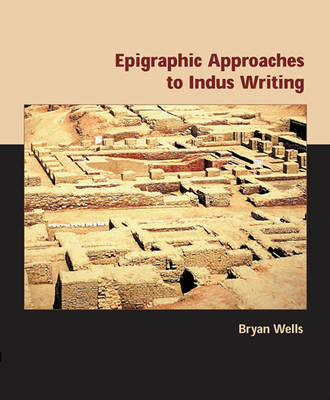
Epigraphic Approaches to Indus Writing
Seiten
2011
Oxbow Books (Verlag)
978-1-84217-994-9 (ISBN)
Oxbow Books (Verlag)
978-1-84217-994-9 (ISBN)
Epigraphic Approaches to Indus Writing is a comprehensive look at one of the last undeciphered Old World scripts. It has defied decipherment for 90 years because of the terse nature of the texts and the lack of a comprehensive corpus and detailed sign list.
Epigraphic Approaches to Indus Writing is a comprehensive look at one of the last undeciphered Old World scripts. It has defied decipherment for 90 years because of the terse nature of the texts and the lack of a comprehensive corpus and detailed sign list. This book presents the analysis of a comprehensive, computer-based corpus using the most detailed sign list yet compiled for the Indus script. Custom computer programs allowed the verification of the sign list and the compilation of statistics regarding sign distribution and use. Among the questions addressed are: How do you create an epigraphic database? How do you define a sign? What is the Indus number system like? Where did the Indus script come from and what is the Indus language(s)?
Bryan Wells is an archaeologist, epigrapher and geographer who has excavated on the west and east coasts of North America and in Baluchistan (Pakistan). Wells has studied the Indus script since 1992, and holds a PhD in anthropology from Harvard University.
Epigraphic Approaches to Indus Writing is a comprehensive look at one of the last undeciphered Old World scripts. It has defied decipherment for 90 years because of the terse nature of the texts and the lack of a comprehensive corpus and detailed sign list. This book presents the analysis of a comprehensive, computer-based corpus using the most detailed sign list yet compiled for the Indus script. Custom computer programs allowed the verification of the sign list and the compilation of statistics regarding sign distribution and use. Among the questions addressed are: How do you create an epigraphic database? How do you define a sign? What is the Indus number system like? Where did the Indus script come from and what is the Indus language(s)?
Bryan Wells is an archaeologist, epigrapher and geographer who has excavated on the west and east coasts of North America and in Baluchistan (Pakistan). Wells has studied the Indus script since 1992, and holds a PhD in anthropology from Harvard University.
Dedication
Preface (Bryan K. Wells)
Contributor List
Foreword (C. C. Lamberg-Karlovsky)
List of Figures and Tables
1. Data Collection and Reliability, Chronology, and the Typologies of Artifacts and Iconography
2. Potters’ Marks and the Origins of the Indus Script
3. Defining an Indus Sign List
4. The Process of Decipherment and Structural Analysis
5. Indus Numeral Signs
6. The Indus Language
7. Other Items of Interest
Appendix
References
| Erscheint lt. Verlag | 15.1.2011 |
|---|---|
| Reihe/Serie | American School of Prehistoric Research Monograph |
| Zusatzinfo | figs, tbls |
| Verlagsort | Oxford |
| Sprache | englisch |
| Themenwelt | Geisteswissenschaften ► Archäologie |
| Geschichte ► Allgemeine Geschichte ► Vor- und Frühgeschichte | |
| Geschichte ► Hilfswissenschaften ► Paläografie | |
| Geisteswissenschaften ► Sprach- / Literaturwissenschaft ► Sprachwissenschaft | |
| ISBN-10 | 1-84217-994-2 / 1842179942 |
| ISBN-13 | 978-1-84217-994-9 / 9781842179949 |
| Zustand | Neuware |
| Haben Sie eine Frage zum Produkt? |
Mehr entdecken
aus dem Bereich
aus dem Bereich
auf den Spuren der frühen Zivilisationen
Buch | Hardcover (2023)
C.H.Beck (Verlag)
CHF 27,95
Konzepte – Methoden – Theorien
Buch | Softcover (2024)
UTB (Verlag)
CHF 55,85
Was Pompeji über uns erzählt
Buch | Hardcover (2023)
Propyläen (Verlag)
CHF 44,75


